Popular games published by company Polyvox
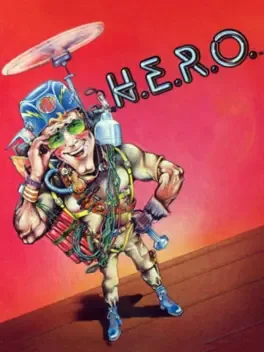
There is trouble in the mines! Volcanic activity has trapped numerous miners, and it is your job to save them. As Roderick Hero, you need to make your way through the dangerous mineshaft avoiding the dangerous creatures and lava, and find out where the miners are located before you run out of energy. To help on your mission, Roderick Hero has several useful types of equipment. A prop pack will allow you to hover and fly around the mineshaft and (hopefully) avoid the many dangers within. Your helmet features a short range microlaser beam which can be used to destroy the bats, spiders, snakes, and other creatures you'll encounter in the mines. From time to time, your path through the mine may be blocked by stone or lava walls. You begin each mission with six sticks of dynamite which can be used to destroy these obstacles (be careful you don't blow yourself up, though!) If you run out of dynamite, your laser beam can also be used to destroy the walls, though this will take longer and use up more energy. As the levels progress, the mine shaft will become longer and more maze-like, creatures will more frequently block the path, and lava walls and pools will appear which are dangerous to the touch.
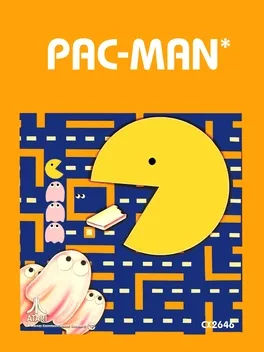
Atari 2600 Port of Pac-Man The player controls Pac-Man through a maze, eating pac-dots (also called pellets). When all pac-dots are eaten, Pac-Man is taken to the next stage. Between some stages one of three intermission animations plays. Four enemies (Blinky, Pinky, Inky and Clyde) roam the maze, trying to catch Pac-Man. If an enemy touches Pac-Man, a life is lost and the Pac-Man itself withers and dies. When all lives have been lost, the game ends. Pac-Man is awarded a single bonus life at 10,000 points by default. Near the corners of the maze are four larger, flashing dots known as power pellets that provide Pac-Man with the temporary ability to eat the enemies. The enemies turn deep blue, reverse direction and usually move more slowly. When an enemy is eaten, its eyes remain and return to the center box where it is regenerated in its normal color. Blue enemies flash white to signal that they are about to become dangerous again and the length of time for which the enemies remain vulnerable varies from one stage to the next, generally becoming shorter as the game progresses. In later stages, the enemies go straight to flashing, bypassing blue, which means that they can only be eaten for a short amount of time, although they still reverse direction when a power pellet is eaten; in even later stages, the ghosts do not become edible (i.e., they do not change color and still make Pacman lose a life on contact), but they still reverse direction.
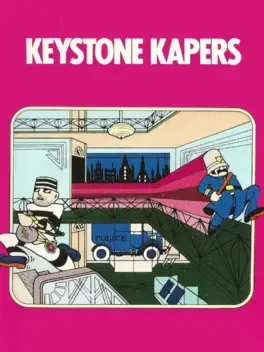
Flash! Harry Hooligan, notorious con-artist, thief and all around-not-a-nice-person, has escaped!! He is now at large and in the vicinity of Southwick‘s Emporium. At this moment, Hooligan is failing every attempt to end his felonious freedom. On the scene is Keystone Kelly, the pride of the men in blue. Officer Kelly, what’s it like in there?” Oh, ‘tis o cryin' shame! Shenanigans like yo wouldn‘t believe! Dastardly deeds that defy description! That rogue is hurlin' everything in reach! Shopping carts, biplanes, beachballs- everything but cathedral radios. LOOK OUT! It's a cathedral radiol! Gotta go! I mean to recover the loot and bust that brute!" Will that double-dyed hoodlum keep Keystone in triple trouble, or will YOU help the greatest gumshoe going catch that no good galoot?? Grab your billyclubs and joysticks! lt's curtains now, Hooligan!"
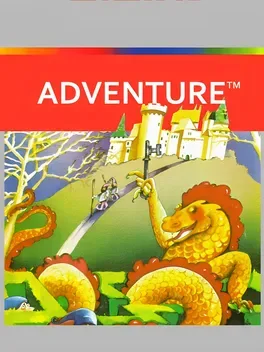
Adventure is a video game for the Atari 2600 video game console, released in 1980. In the game, the player controls a square avatar whose quest is to hunt an open world environment for a magical chalice, returning it to the golden castle. The game world is populated by roaming enemies: dragons, which can eat the avatar; and a bat, which randomly steals and hides items around the game world. Adventure was designed and programmed by Atari employee Warren Robinett, and published by Atari, Inc. At the time, Atari programmers were generally given full control on the creative direction and development cycle for their games, and this required them to plan for their next game as they neared completion of their current one to stay productive. Robinett submitted the source code for Adventure to Atari management in June 1979 and soon left Atari. Atari released the game in early 1980.
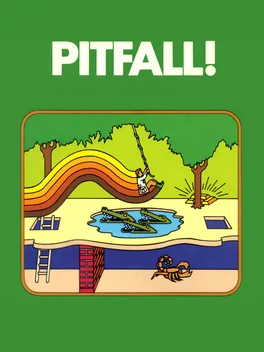
Pitfall! is a video game designed by David Crane for the Atari 2600 and released by Activision in 1982. The player controls Pitfall Harry and is tasked with collecting all the treasures in a jungle within 20 minutes while avoiding obstacles and hazards.

Haunted House is an Atari 2600 video game written by James Andreasen and published by Atari, Inc. in February 1982. The player, represented by a pair of eyes, must navigate the haunted mansion of the late Zachary Graves to recover the three pieces of an urn. The game has been identified as one of the earliest examples of the survival horror genre.
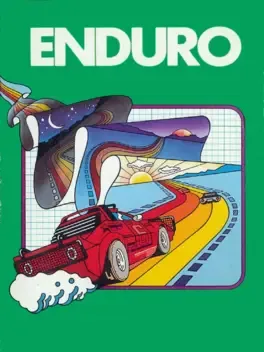
Strap on your goggles. Sink into your seat. And leave all your fears in the pit. You're about to enter the race of your life. You'll be required to pass lots of cars each day. Through sun and snow and fog and ice, sunrise to sunset - as fast as you can. Welcome to the National Enduro!
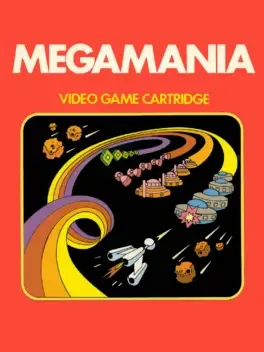
In Megamania, the gameplay resembles that of Space Invaders. Rather than being aliens or spaceships, however, the enemies in this game are various objects such as hamburgers, bow ties, and steam irons. The object is to shoot them down before the energy bar at the bottom of screen is depleted, all while avoiding the oncoming enemies and their own projectiles attacks. Each of the enemies fly in select patterns and as soon as they hit the bottom of the screen, they re-appear at the top until shot by the player. The player's spacecraft depicted in the game is a cross between the U.S.S. Enterprise and Klingon battlecruiser from the Star Trek universe. Gameplay-wise and in terms of graphics, MegaMania bears a very strong resemblance to Sega's 1981 arcade title "Astro Blaster". Both games feature nearly identical patterns of approaching enemies with the player relying on an "Energy" meter. Also, the player's ship bears a remarkable similarity in both games. When Megamania was originally sold, anyone who scored above 45,000 points could send Activision a picture of their screen and become an official Megamaniac. They also would receive an Official Megamaniac emblem.[2] If a player exceeds a score of 999,999 the game ends.
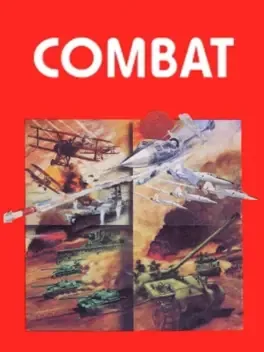
Combat is an early video game by Atari, Inc. for the Atari 2600. It was based on two earlier black-and-white coin-operated arcade games produced by Atari. Combat had color graphics and numerous gameplay variations. The 27 game modes featured a variety of different combat scenarios, including tanks, biplanes, and jet fighters. The tank games had interesting options such as bouncing munitions ("Tank-Pong") and invisibility. The biplane and jet games also allowed for variation, such as multiple planes per player and an inventive game with a squadron of planes versus one giant bomber.
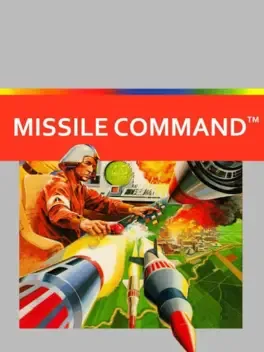
Atari 2600 port of Missile Command.
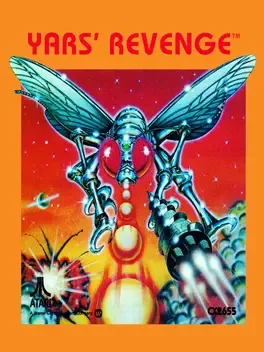
Yars' Revenge is a video game released for the Atari 2600 in 1982. It was created by Howard Scott Warshaw and was Atari's best-selling original title for the 2600.
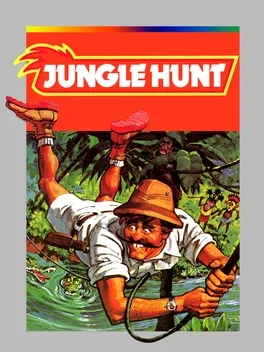
Jungle Hunt is side-scrolling arcade game produced and released by Taito in 1982. It was initially released as Jungle King. Jungle Hunt is one of the first video games to use parallax scrolling. The player controls an unnamed jungle explorer sporting a pith helmet and a safari suit. The player attempts to rescue his girl from a tribe of hungry cannibals by swinging from vine to vine, swimming a crocodile-infested river, jumping over or ducking beneath rolling rocks, then releasing the girl before she is lowered into a boiling cauldron. Home versions were released for the Apple II, Atari 2600, Atari 5200, Atari 8-bit family, Commodore 64, ColecoVision, VIC-20, and IBM PC. The PC version was developed by Sierra On-Line and is incompatible with everything except an original IBM PC/XT with a CGA video card. In the Atari-ported versions the hero is named Sir Dudley, and the girl, married to Sir Dudley, is Lady Penelope.
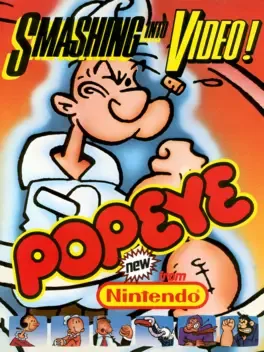
Popeye is a 1982 arcade game developed and released by Nintendo based on the Popeye cartoon characters licensed from King Features Syndicate. In Popeye, two players can alternate playing or one player can play alone. The top five highest scores are kept along with the player's three initials. Popeye was available in standard and cocktail configurations.

You're an Eskimo who wants to build an igloo to live in during the cold season. To do this, you must jump from ice-block to ice-block, while avoiding wildlife such as birds and crabs. Coming with contact with any of these will cause them to push you off the block and into the deadly water. Once you have built your igloo, you must enter it to proceed to the next level. Remember, you must build it before the temperature drops to 0°. You have four lives.
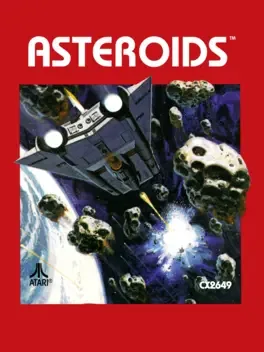
Asteroids for the Atari 2600 is a port of the arcade space shooter released in November 1979. The player controls a spaceship in an asteroid field which is periodically traversed by flying saucers. The objective of the game is to destroy both, asteroids and saucers. The triangular ship can rotate left and right, fire shots straight forward, and thrust forward. Once the ship begins moving in a direction, it will continue in that direction for a time without player intervention unless the player applies thrust in a different direction. The ship eventually comes to a stop when not thrusting. The player can also send the ship into hyperspace, causing it to disappear and reappear in a random location on the screen, at the risk of self-destructing or appearing on top of an asteroid.
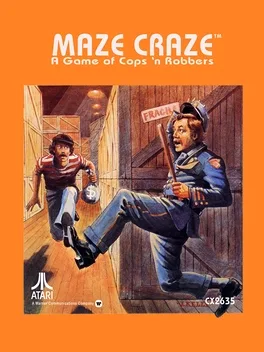
In Maze Craze, your goal is to be the first of two players to make it out of a maze! Each player controls a cop that starts on the left, and the first player to make it out the exit on the right wins. The game also includes of variety of options. The maze can be completely visible, completely invisible, or have just a few parts invisible. With invisible mazes you can optionally have the computer provide a sneak peak at the complete maze periodically. To make your task more challenging, one to five robbers may also be placed in the maze. If you are caught by one of the robbers, you will momentarily be stunned giving your opponent an advantage. You can also give your cop the ability to set up a blockade to confuse your opponent. This will look like a regular wall, however you can walk straight through it. The games speed can also be adjusted, from calculatingly slow to extremely fast.
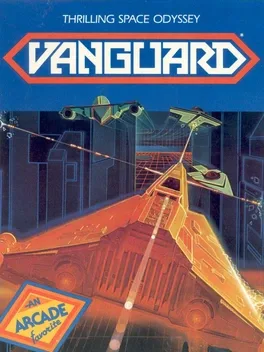
Vanguard is a shoot 'em up game which leads the player through five different zones to the City of Mystery where the creature Gond awaits him which he has to kill. The five zones run horizontally as well as vertically and are filled with different enemies for each zone. Being hit by an enemy, a projectile or the walls results in losing a life. There are, however, collectable items which grant the player a short time of invincibility. Shooting differs somewhat from other shoot 'em ups: The player's ship is able to fire in all four directions depending on the direction the player steers his ship. However, in doing so, the ship flies in that direrction as well which may result in crashing into an obstacle. The ship is constantly running out of fuel which can be replenished by killing enemies. After defeating Gond the game starts anew on a higher difficulty level.
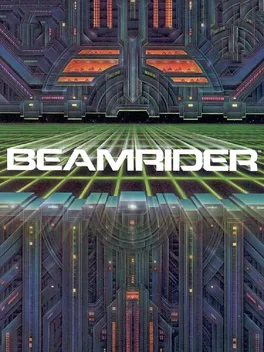
A web of iridescent blue beams engulfs Earth-Space. You stand watching. Mesmerized at first, you now realize the beams support weapons, frightening creations in different forms. Will you just watch or will you take action? Action??!! Then roll up your sleeves, mount these beams and... ride! Animated graphics create a 3D perspective that virtually pulls you into the screen. Pulsating sound effects intensify the action as a dizzying array of objects zips from beam to beam.
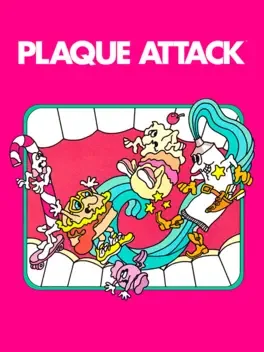
Plaque Attack is a 1983 video game for the Atari 2600 that was made by Activision. Loosely based on Space Invaders, the player must prevent food from destroying teeth in a person's mouth. Steve Cartwright, who designed the game, said that game was meant to help people develop good dental habits.

The game is based on the game of bowling, playable by one player or two players alternating. In all six variations, games last for 10 frames, or turns. At the start of each frame, the current player is given two chances to roll a bowling ball down an alley in an attempt to knock down as many of the ten bowling pins as possible. The bowler (on the left side of the screen) may move up and down his end of the alley to aim before releasing the ball. In four of the game's six variations, the ball can be steered before it hits the pins. Knocking down every pin on the first shot is a strike, while knocking every pin down in both shots is a spare. The player's score is determined by the number of pins knocked down in all 10 frames, as well as the number of strikes and spares acquired.
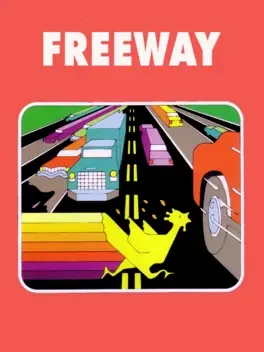
Freeway is a video game designed by David Crane for the Atari 2600 video game console. It was published by Activision in 1981. One or two players control chickens who can be made to run across a ten lane highway filled with traffic in an effort to "get to the other side." Every time a chicken gets across a point is earned for that player. If hit by a car, a chicken is forced back either slightly, or pushed back to the bottom of the screen, depending on what difficulty the switch is set to. The winner of a two player game is the player who has scored the most points in the two minutes, sixteen seconds allotted. The chickens are only allowed to move up or down. A cluck sound is heard when a chicken is struck by a car. Comparisons are often made to Frogger, which has also features crossing a street filled with moving vehicles. Similarities did help sales when Frogger was popular in the arcades and a home version was not yet available. Freeway was made available on Microsoft's Game Room service for its Xbox 360 console and for Windows-based PCs on August 18, 2010.
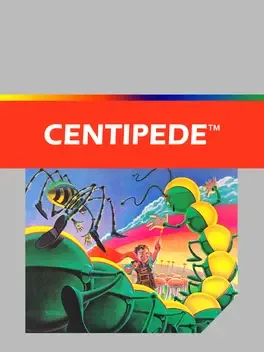
Atari 2600 port of Centipede.
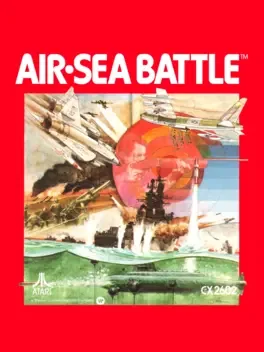
There are six basic types of game available in Air-Sea Battle, and for each type, there are one or two groups of three games, for a total of twenty-seven game variants. Within each group, variant one is the standard game, variant two features guided missiles which can be directed left or right after being fired, and variant three pits a single player (using the right gun) against a computer opponent, which simply fires continuously at the default angle or speed. In every game, players shoot targets (enemy planes or ships, shooting gallery targets, or each other, depending on the game chosen) competing to get a higher score. Each round lasts two minutes and sixteen seconds; the player with the higher score after time expires is the winner, unless one player wins (and ends the game) by reaching 99 points before the time is up.
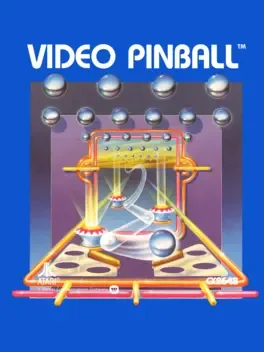
Video Pinball is a loose simulation of an arcade pinball machine: ball launcher, flippers, bumpers, and spinners.